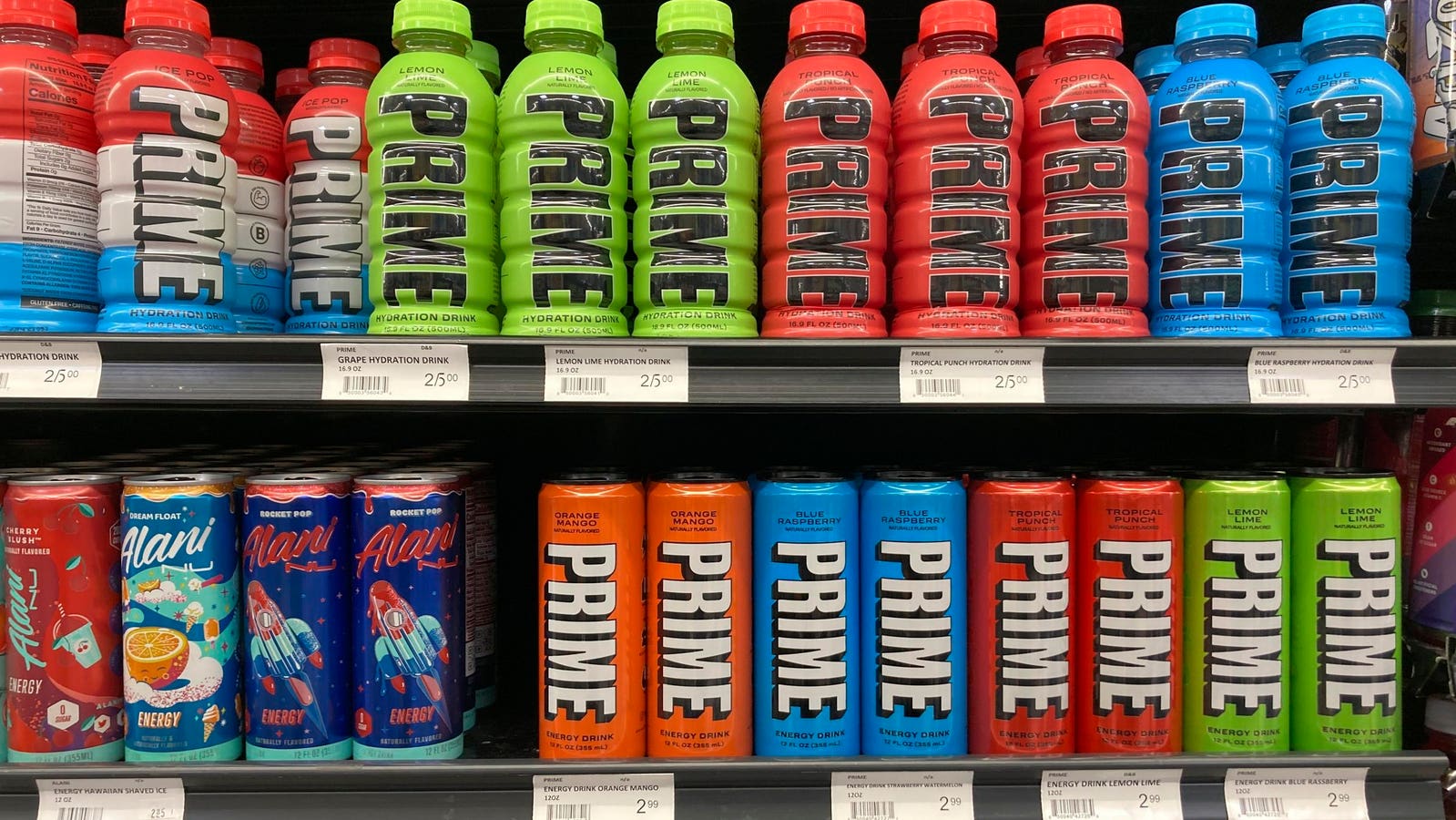
How Brands And Influencers Are Co-Creating New Products
KSI poses for photographers as he opens the PRIME pop-up store on Piccadilly Circus in London … [+] Friday, Nov. 10, 2023. (Photo by Vianney Le Caer/Invision/AP)
Invision
Forget sponsored posts – the influencer game has levelled up. Today manufacturers and influencers are joining forces to create new brands. This win-win situation leverages a content creators reach and expertise to develop innovative products that stand out from the crowd.
The Influencer Advantage
Influencers are the new marketing stars. Unlike traditional ads, these content creators connect with audiences on a personal level. They’re trusted voices with dedicated followers, making them trendsetters and powerful persuasion machines. Brands are now catching on, realizing influencers are more than just pretty faces – they’re valuable collaborators.
MORE FROM FORBESHow To Transition Your Content Creation From Side Hustle To CareerBy Ian Shepherd
The Rise of Collaborative Product Development
This influencer product development is all about co-creation. Brands tap into influencer knowledge, giving them a peek into niche markets, consumer desires, and the latest trends. This not only ensures products hit the target audience bullseye, but also builds trust and authenticity. Products with genuine influencer involvement feel like recommendations, not commercials.
So how does it work? Brands and influencers brainstorm together, identifying market gaps and hot product ideas. Influencers might then provide input on features, packaging, marketing strategies, and even pricing.
Prime: A Case Study in Co-Creation
The energy drink market is a crowded battlefield, dominated by established giants. Yet, Prime Hydration, a newcomer co-founded by YouTube personalities KSI and Logan Paul, has carved a unique space and achieved remarkable success in a short period.
Prime’s influencer marketing strategy goes beyond simply having KSI and Logan Paul endorse the drink. They actively position themselves as invested creators who participate in the product’s development. From taste-testing different formulations to providing creative input on the design, they have cultivated an image of active involvement.
Bloomberg recently reported that Prime was on track to surpass $1.2 billion in annual sales within two years of launch.
The Benefits of Collaborative Product Development
This influencer co-creation approach offers benefits for both brands and influencers:
- Authenticity: Products created through influencer collaborations are perceived as more authentic and genuine, fostering trust and credibility among consumers.
- Market insights: Influencers bring valuable insights into consumer preferences, emerging trends, and market dynamics, helping brands stay ahead of the curve.
- Increased reach: By leveraging the influencer’s social media platforms and engaged followers, brands can amplify their reach and generate buzz around new product launches.
- Creative innovation: Influencers often bring a fresh perspective and creative flair to product development, resulting in innovative and trend-setting products that resonate with consumers.
- Brand loyalty: When influencers are actively involved in the product creation process, their followers are more likely to feel emotionally invested in the brand, leading to increased loyalty and advocacy.
MORE FROM FORBESHow AI Impacts Social Media Content CreationBy Ian Shepherd
Challenges and Considerations
While collaborative product development with influencers offers compelling opportunities, it also poses certain challenges and considerations for brands:
- Commercialization: Brands must strike a delicate balance between leveraging the influencer’s authenticity and ensuring that the collaboration does not feel overly commercialized or insincere.
- Alignment of values: Brands should carefully select influencers whose values, aesthetic, and audience align with their own to ensure a seamless partnership and cohesive brand narrative.
- Legal and Regulatory Compliance: Brands must navigate legal and regulatory considerations, including FTC guidelines on disclosure and transparency in influencer marketing, to avoid potential pitfalls and maintain consumer trust.
- Long-term viability: Brands should evaluate the long-term viability and sustainability of influencer partnerships, considering factors such as evolving consumer trends, shifting social media algorithms, and changes in the influencer landscape.
Looking Ahead
As the influencer marketing landscape continues to evolve, I believe collaborative product development represents a powerful strategy for brands to engage consumers, drive innovation, and differentiate themselves in a crowded marketplace. And by harnessing the creative energy and authenticity of influencers, I think brands can create new products that resonate on a whole new level.


